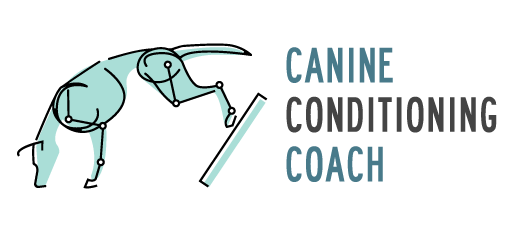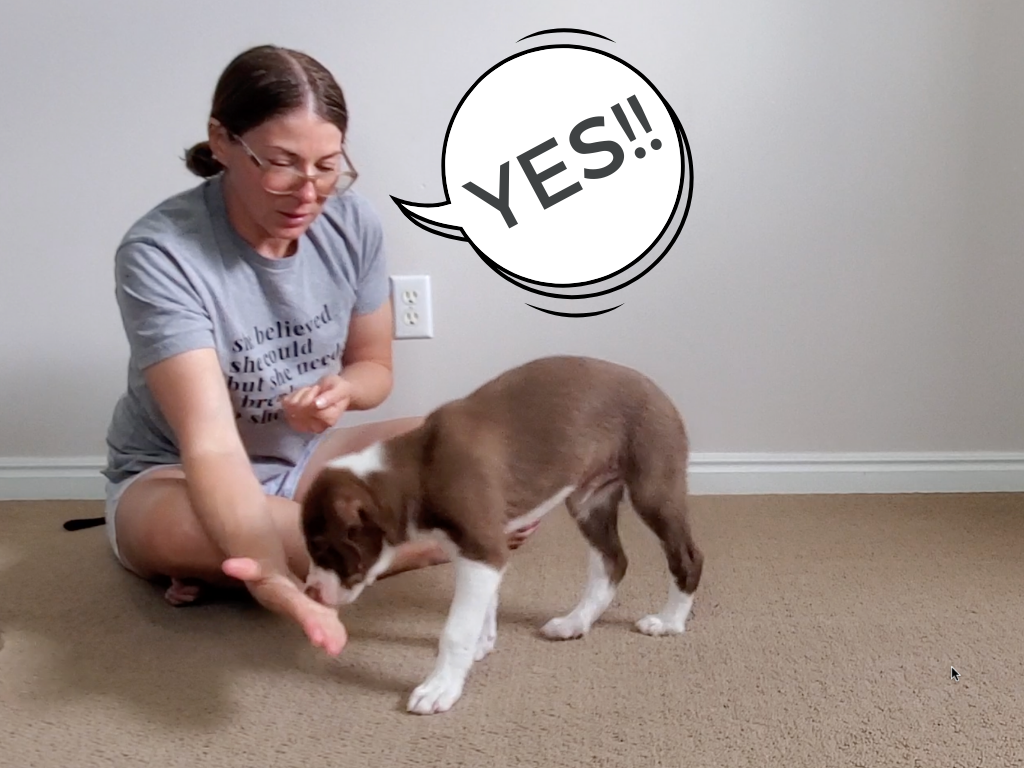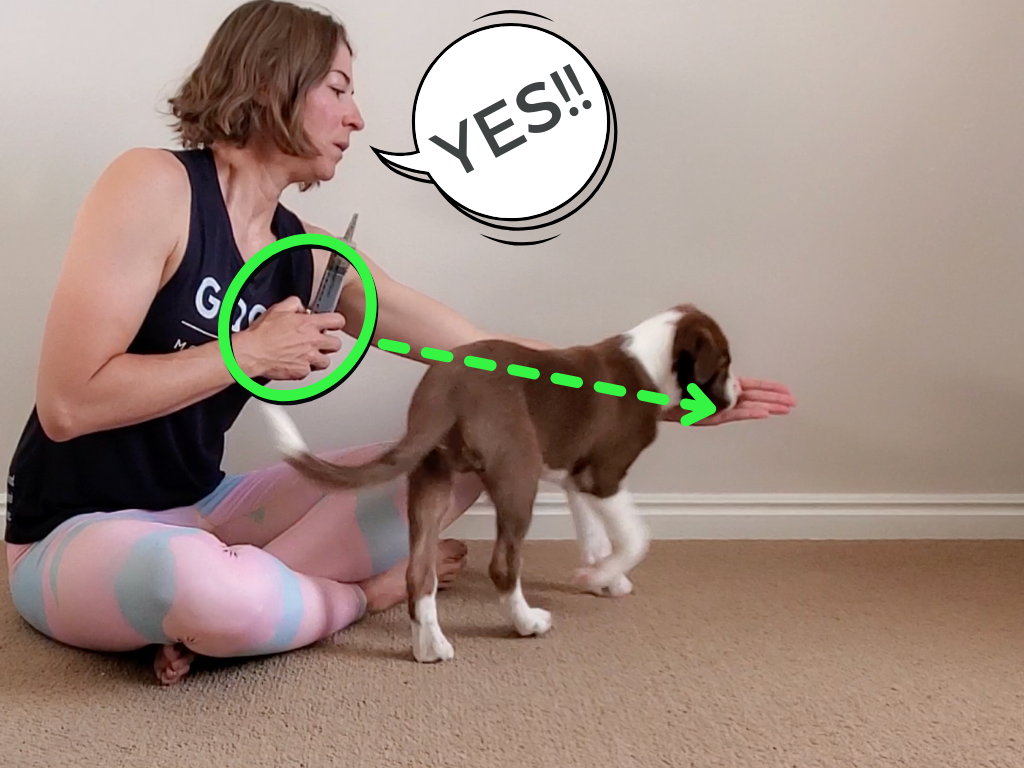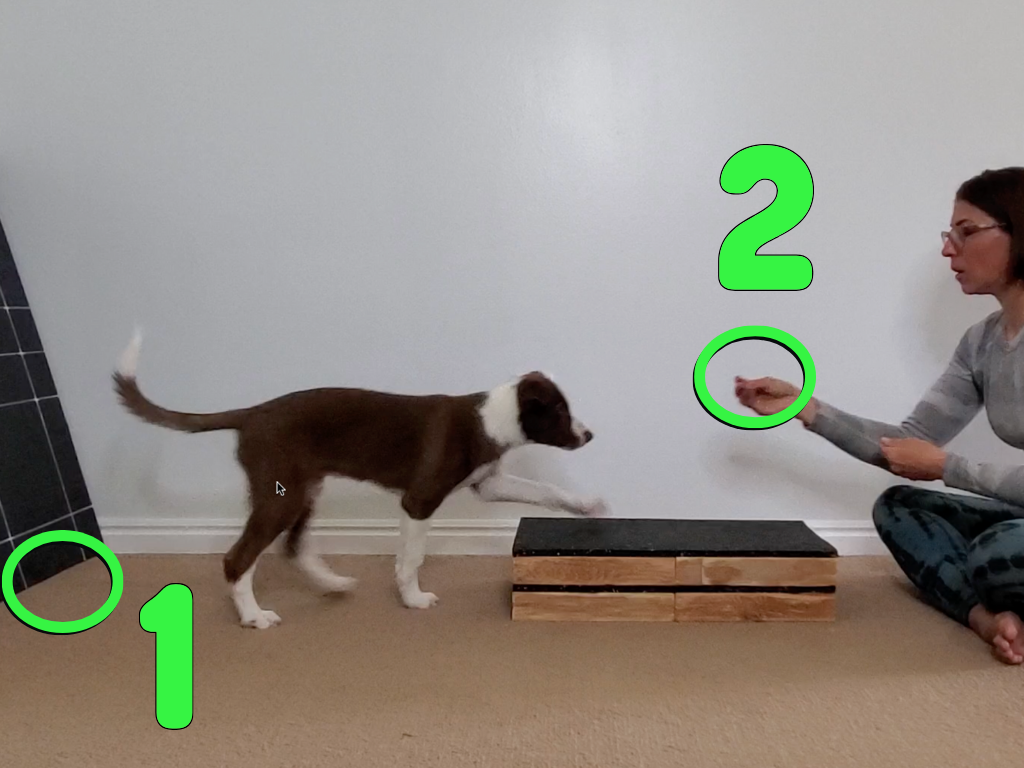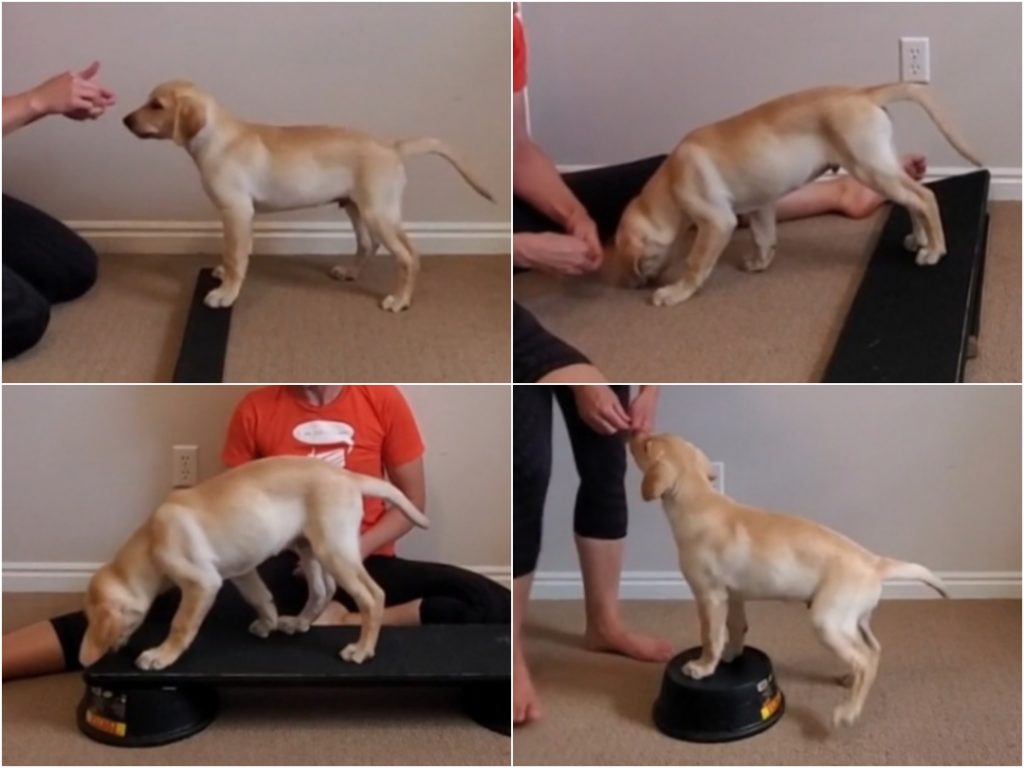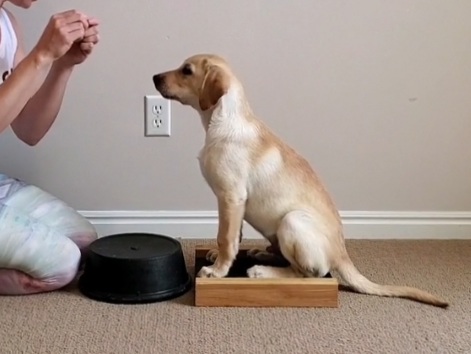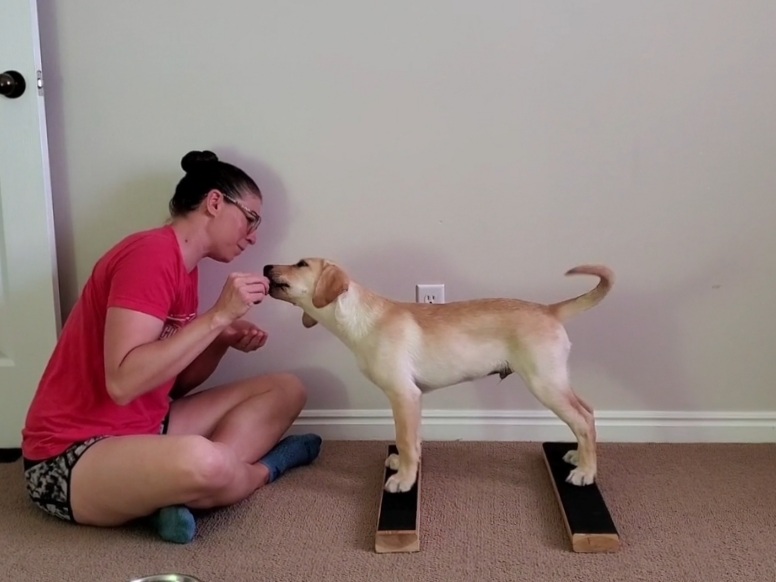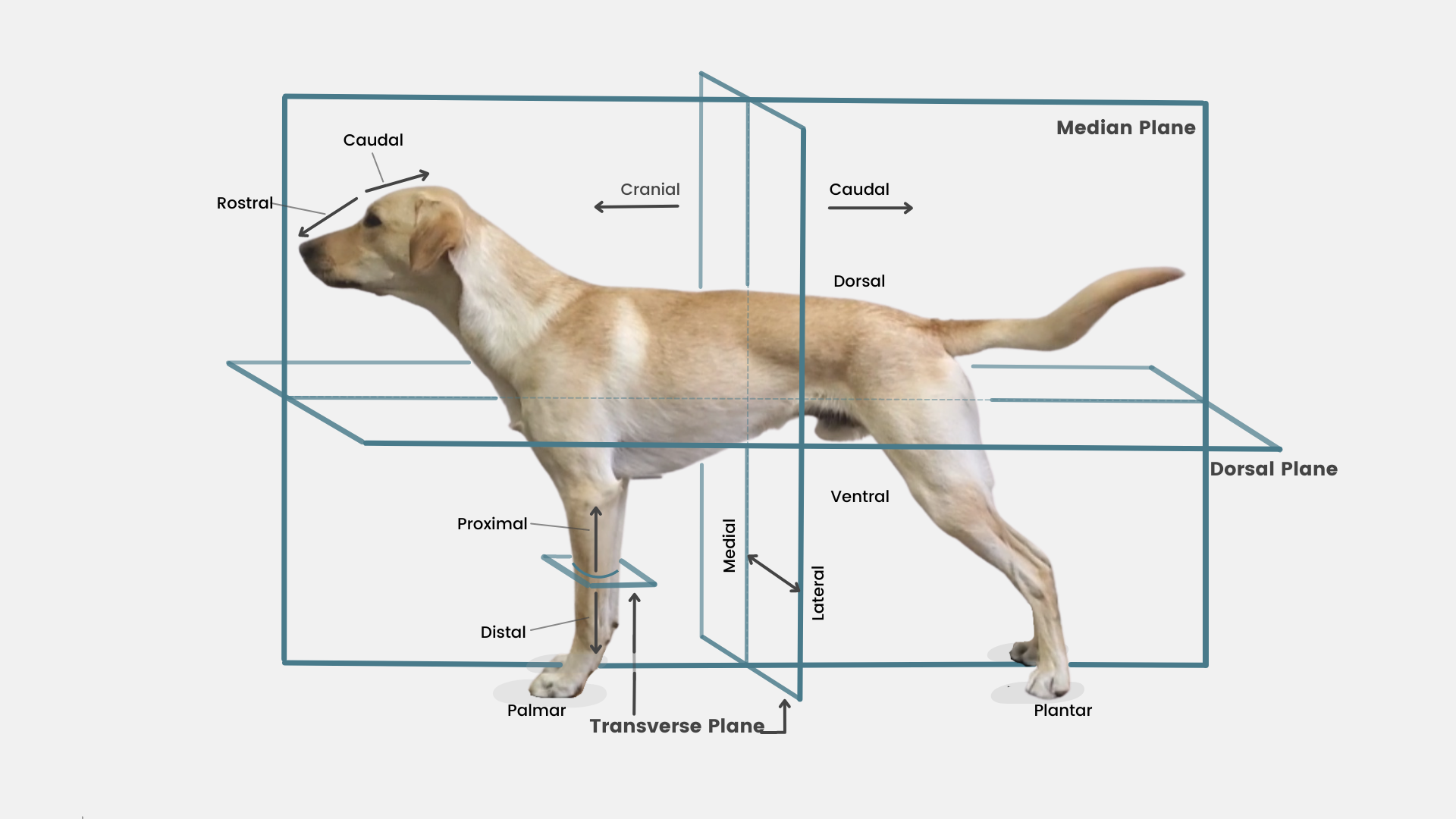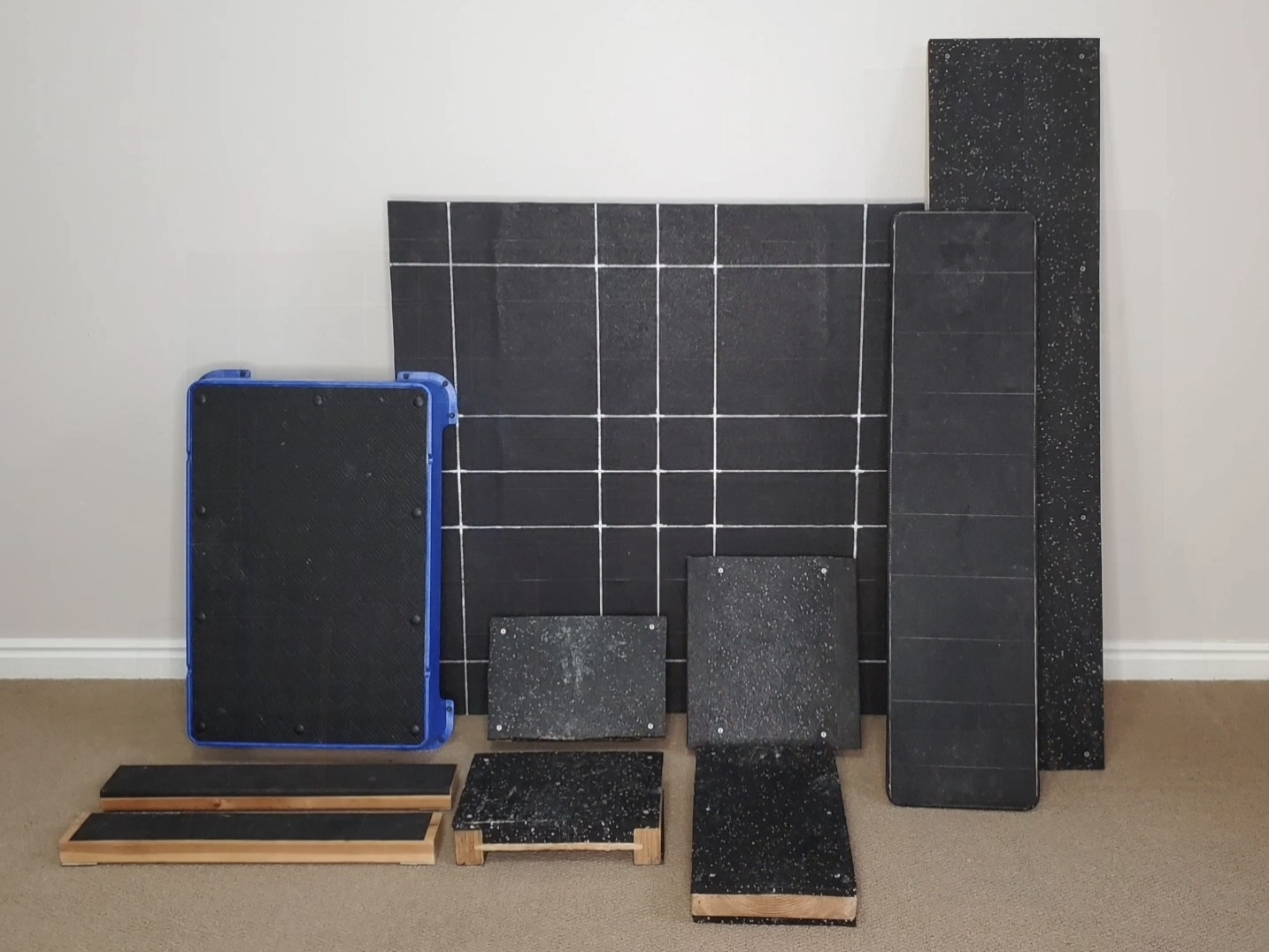Purpose: Platforms are by far the most used prop in canine conditioning exercises. They inform the dog where their feet should go, promote proper alignment, and play a major role in regulating the difficulty of an exercise. But when we are introducing platforms to a brand new learner, it’s important that we’re not asking for too much precision too soon, and instead focus on building a reward history to the gross movement pattern. Once the dog is executing the general movement pattern we want (Sit, Down, Stand, etc), and maintaining their level of arousal and engagement, then it’s fair to make the platform size smaller, and tighten up criteria. I am usually able to achieve this after just a few repetitions (5-10), and can switch to a more appropriately sized platform in the same session.
Equipment: Various.
NOTE: These Pre Foundation exercises are really training skills all future exercises are built upon. If your pup is struggling with arousal levels increasing / decreasing, frustration, giving up, or a general lack of understanding, incorporating these Pre Foundation skills is sure to help!!
Targets: This video shows how I introduced platforms to David Rose through a variety of different exercises. In general I start with a larger platform, or multiple platforms stacked / organized in a row. Then as David Rose gained understanding and proficiency, I was able to swap out the larger prop setup for something smaller. Smaller props “force” proper alignment, which ensures we are moving with good form, and are targeting the proper muscles.
Watchpoints:
1. Some dogs are quite sensitive to failure, and will give up, while others will start offering behaviors rapid fire as quickly as possible, and others will become mouthy, pushy, or vocal. In all of these scenarios, the dog is frustrated, and does not understand the pathway to the reward.
2. We can help out by making the requirements to earn a reward easier, and switch out the platform size to something larger, or place multiple platforms together. Then once the dog understands the pathway to the reward, we can tighten up criteria, and ask for more difficulty, and more refined alignment.
3. When swapping platforms mid session, try to keep the setup as similar as possible. Meaning keep the props in the same general location, oriented in the same way, and implementing the same Training Loop. That way we keep the context the same, and ensure we are leveraging the patterning we have already installed. Ideally, the dog will hardly notice the change in prop setup… if at all.
